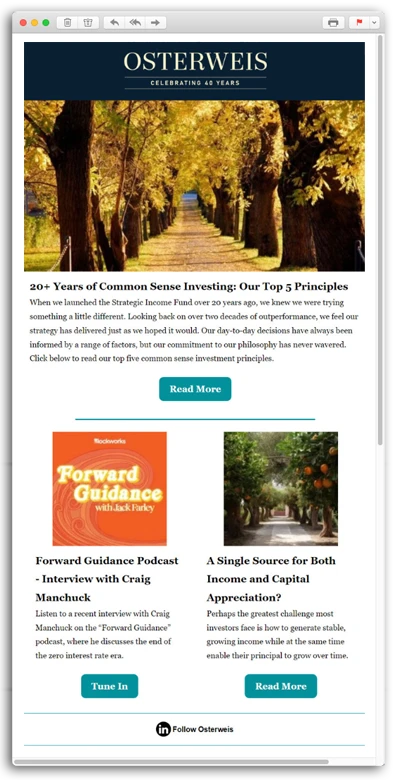Although leveraged buyouts (LBOs) are generally among the largest and most high profile deals in the high yield market, we find they frequently contain unfavorable surprises. The recent Blackstone acquisition of Refinitiv, the Financial and Risk division of Thomson Reuters, was an excellent example of why we tend to stay away from these bonds.
Investor Protections Are Limited
The deal was structured like most of the sponsor-backed issues we analyze – the headline elements (e.g., coupon, maturity, call protection) were more-or-less in line with the broader market, but a closer look under the hood revealed significant structural deficiencies. In this case, the coupons were a little above market given the issuer’s low credit rating (Caa2, Moody’s and B-, Standard & Poor’s), but the covenants were extremely weak. Most importantly, Blackstone asked investors to assume that the $500 million in cost savings they are expecting to achieve over the next 5 years will be fully realized at the closing of the deal — a giant leap of faith that substantially reduced borrower’s leverage ratio. In addition, there were unusually loose terms governing restricted payments, including allowing the issuer to pay dividends to its owners even if the firm comes under severe financial distress, directly penalizing bondholders who are senior in the capital structure to the equity holders.
These types of covenants are consistent with the general pattern we’ve observed in recent LBOs. The financial sponsors – usually private equity firms that own the borrowing entity – intentionally issue bonds with weak bondholder protections that allow the sponsors to maintain maximum control and flexibility over the decisions they make regarding their businesses.
Bondholders, on the other hand, would like the issuers to adhere to rules that limit their ability to spend money carelessly or raise large amounts of new debt, both of which could impair their ability to pay bondholders back in the future.
In many segments of the high yield market, issuers and bondholders negotiate covenants such that both sides receive at least some of what they require. But in most of the sponsored-back deals we’ve looked at, there is minimal give-and-take and the terms heavily favor the sponsor.
Index-Driven Investors Support the Market
So how is it possible that these deals continue to come to market successfully and raise such large sums of money? The Thomson Reuters deal raised $13.5 billion, making it the 9th largest leveraged buyout on record (in both the United States and Europe). Who are the investors that are willing to turn a blind eye to the obvious risks they present?
In our view, the key to the commercial viability of these deals is the fact that they become significant components of the high yield (HY) indices, which HY exchange traded funds (ETFs) and many HY managers use as their benchmarks. Passive vehicles are therefore required to purchase them, as are many index-centric actively managed funds.
These benchmark oriented investors manage their portfolios on a relative return basis, which means they also try to replicate an index to limit tracking error (i.e., the difference between the return of their portfolio vs. that of their benchmark). So, like passive funds, they are effectively compelled to buy these deals even if they don’t necessarily like the structure or pricing. They may adjust the weights in their portfolio vs. the index, depending on how confident they are in a particular issue, but they generally hold them regardless.
“Common Sense” Investing Is Key
In our opinion, relative-return investing is too limiting, so we have always used an absolute return approach. We are benchmark-agnostic, which allows us the freedom to invest in only the securities we find attractive and to avoid areas we feel are sub-optimal merely to keep up with an index.
We call it “common sense investing,” and we find it is the most effective way to achieve our dual objectives of preserving capital and attaining long-term total returns. To that end, we are particularly selective about sponsor-backed bonds issued to finance large leveraged buyouts.
Craig Manchuck
Vice President & Portfolio Manager – Strategic Income
Strategic Income Fund Quarter-End Performance (as of 12/31/25)
| Fund | 1 MO | QTD | YTD | 1 YR | 3 YR | 5 YR | 10 YR | 15 YR | 20 YR |
INCEP (8/30/2002) |
|---|---|---|---|---|---|---|---|---|---|---|
| OSTIX | 0.50% | 0.73% | 5.47% | 5.47% | 8.56% | 4.89% | 5.47% | 4.93% | 5.72% | 6.17% |
| Bloomberg U.S. Aggregate Bond Index | -0.15% | 1.10% | 7.30% | 7.30% | 4.66% | -0.36% | 2.01% | 2.42% | 3.25% | 3.39% |
Gross expense ratio as of 3/31/25: 0.83%
30 Day SEC Yield as of 12/31/25: 4.83%
Performance data quoted represent past performance; past performance does not guarantee future results. The investment return and principal value of an investment will fluctuate so that an investor’s shares, when redeemed, may be worth more or less than their original cost. Current performance of the Fund may be higher or lower than the performance quoted. Performance data current to the most recent month end may be obtained by calling shareholder services toll free at (866) 236-0050.
Rates of return for periods greater than one year are annualized.
Where applicable, charts illustrating the performance of a hypothetical $10,000 investment made at a Fund’s inception assume the reinvestment of dividends and capital gains, but do not reflect the effect of any applicable sales charge or redemption fees. Such charts do not imply any future performance.
The Bloomberg U.S. Aggregate Bond Index (Agg) is widely regarded as the standard for measuring U.S. investment grade bond market performance. This index does not incur expenses and is not available for investment. The index includes reinvestment of dividends and/or interest income.
Source for any Bloomberg index is Bloomberg Index Services Limited. BLOOMBERG® is a trademark and service mark of Bloomberg Finance L.P. and its affiliates (collectively “Bloomberg”). Bloomberg owns all proprietary rights in the Bloomberg Indices. Bloomberg does not approve or endorse this material, or guarantees the accuracy or completeness of any information herein, or makes any warranty, express or implied, as to the results to be obtained therefrom and, to the maximum extent allowed by law, neither shall have any liability or responsibility for injury or damages arising in connection therewith.
References to specific companies, market sectors, or investment themes herein do not constitute recommendations to buy or sell any particular securities.
There can be no assurance that any specific security, strategy, or product referenced directly or indirectly in this commentary will be profitable in the future or suitable for your financial circumstances. Due to various factors, including changes to market conditions and/or applicable laws, this content may no longer reflect our current advice or opinion. You should not assume any discussion or information contained herein serves as the receipt of, or as a substitute for, personalized investment advice from Osterweis Capital Management.
Complete holdings of all Osterweis mutual funds (“Funds”) are generally available ten business days following quarter end. Holdings and sector allocations may change at any time due to ongoing portfolio management. Fund holdings as of the most recent quarter end are available here: Strategic Income Fund
Opinions expressed are those of the author, are subject to change at any time, are not guaranteed and should not be considered investment advice.
Mutual fund investing involves risk. Principal loss is possible. The Osterweis Strategic Income Fund may invest in debt securities that are un-rated or rated below investment grade. Lower-rated securities may present an increased possibility of default, price volatility or illiquidity compared to higher-rated securities. The Fund may invest in foreign and emerging market securities, which involve greater volatility and political, economic and currency risks and differences in accounting methods. These risks may increase for emerging markets. Investments in debt securities typically decrease in value when interest rates rise. This risk is usually greater for longer-term debt securities. Small- and mid-capitalization companies tend to have limited liquidity and greater price volatility than large-capitalization companies. Higher turnover rates may result in increased transaction costs, which could impact performance. From time to time, the Fund may have concentrated positions in one or more sectors subjecting the Fund to sector emphasis risk. The Fund may invest in municipal securities which are subject to the risk of default.
Coupon is the interest rate paid by a bond. The coupon is typically paid semiannually.
Maturity is the date on which the life of a transaction or financial instrument ends, after which it must either be renewed, or it will cease to exist.
Call protection is a protective provision of a callable security prohibiting the issuer from calling back the security for a specified period of time.
Leverage ratio is a financial metric that helps investors assess how indebted a company is. A lower number is more desirable than a higher number. There are several ways to compute leverage, but one common approach is to divide the company’s total outstanding debt by its trailing 12-month profits.
Investment grade/non-investment grade (high yield) categories and credit ratings breakdowns are based on ratings from S&P, which is a private independent rating service that assigns grades to bonds to represent their credit quality. The issues are evaluated based on such factors as the bond issuer’s financial strength and its ability to pay a bond’s principal and interest in a timely fashion. S&P’s ratings are expressed as letters ranging from ‘AAA’, which is the highest grade, to ‘D’, which is the lowest grade. A rating of BBB- or higher is considered investment grade and a rating below BBB- is considered non-investment grade. Other credit ratings agencies include Moody’s and Fitch, each of whom may have different ratings systems and methodologies.
The Osterweis Funds are available by prospectus only. The Funds’ investment objectives, risks, charges, and expenses must be considered carefully before investing. The summary and statutory prospectuses contain this and other important information about the Funds. You may obtain a summary or statutory prospectus by calling toll free at (866) 236-0050, or by visiting www.osterweis.com/statpro. Please read the prospectus carefully before investing to ensure the Fund is appropriate for your goals and risk tolerance.
Osterweis Capital Management is the adviser to the Osterweis Funds, which are distributed by Quasar Distributors, LLC. [35231]


